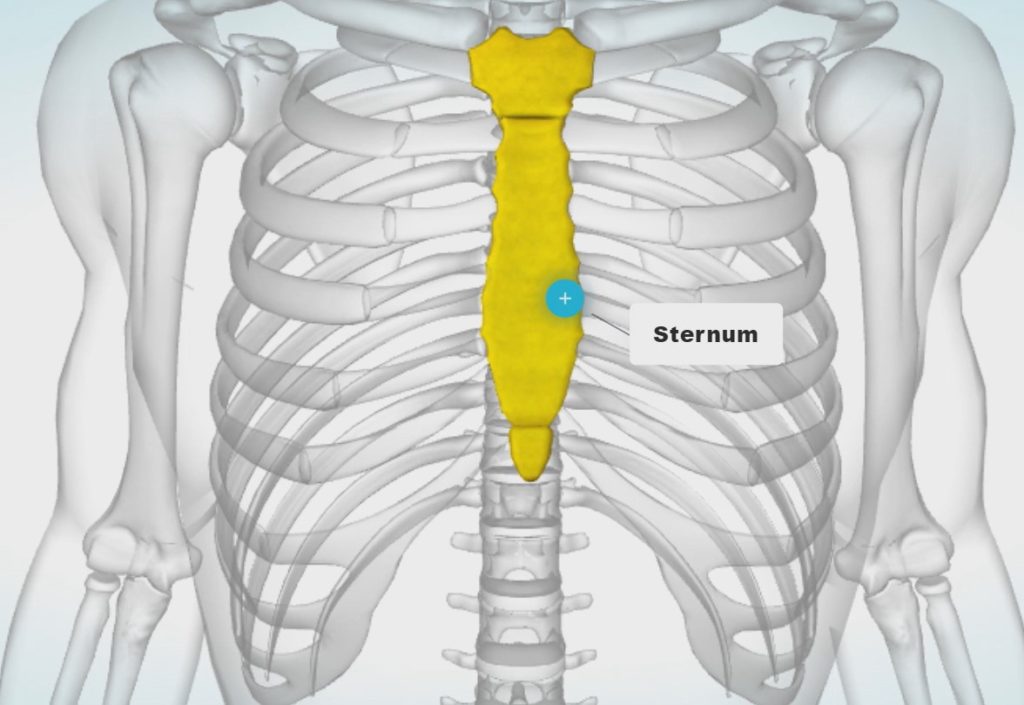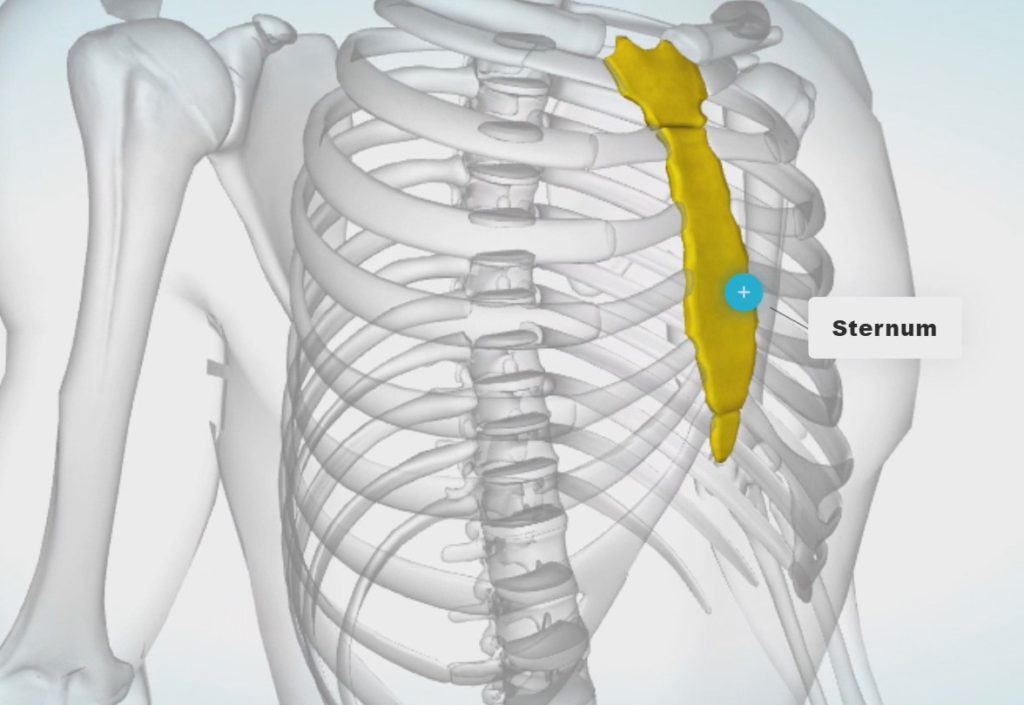Pectus Carinatum is a deformity of the chest characterized by an outwards protrusion of the chest. It occurs when the breast bone (sternum) is getting pushed outwards by the growth of the ribs and/or sternum itself.
The sternum is a plate of bone forming the middle of the anterior wall of the thorax and articulating with the clavicles and the cartilages of the first seven ribs. Measuring around 6 inches in an adult, the sternum has three main parts:
- Manubrium: Wide rectangular portion at the top
- Body: A long and flat part that makes up most of the sternum
- Xiphoid process: Small point at the end of the sternum that’s significantly more narrow and thinner than the rest of the sternal body


The direction the sternum is pushed outwards determines the Type of PC that presents. Directly outwards results in a Central Mid PC. When the manubrium is more prominent we have a Central High PC. When the xiphoid is more prominent we have a Central Low PC. The left side of the sternum pushing outwards more than the right side results in a Lateral Left PC whereas the right side pushing out more results in a Lateral Right PC. See more on the Types of PC Page.
